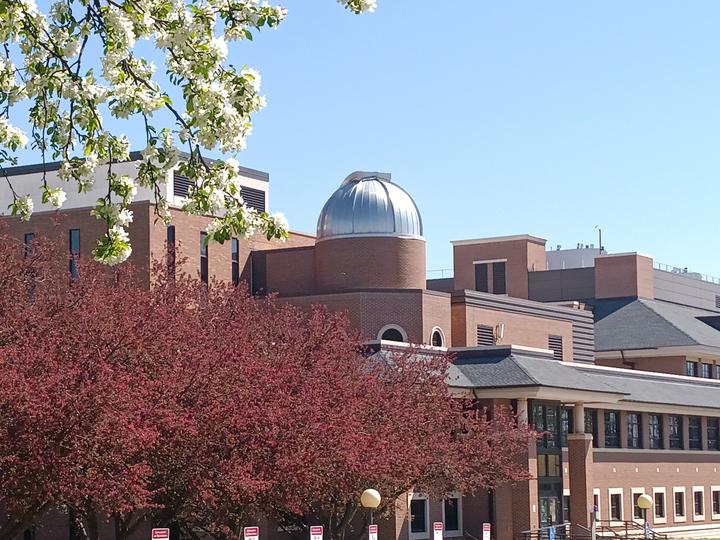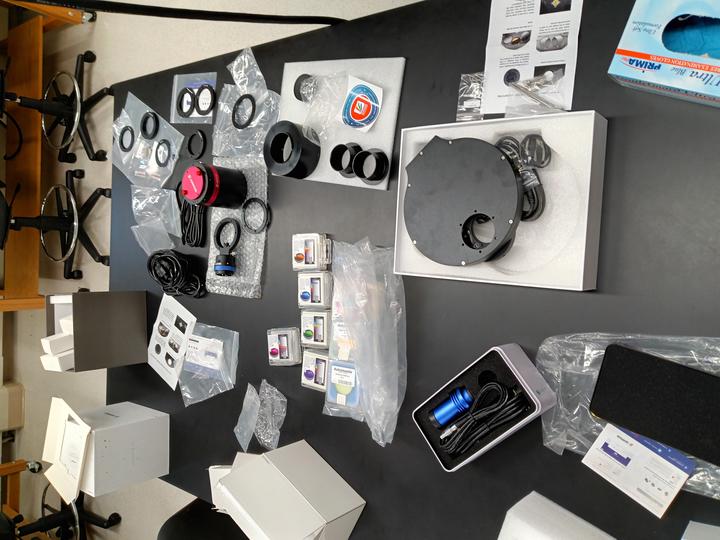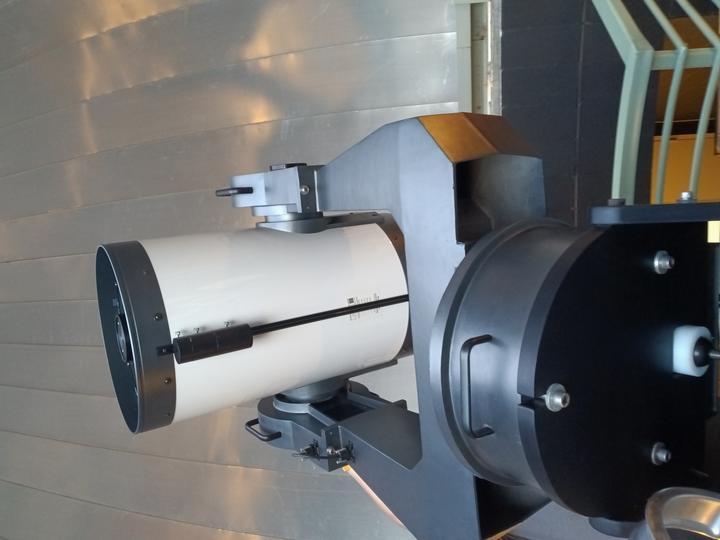
When they were growing up, Joe Erdrich ’25, Wahpeton, N.D., and Ethan Schmitz ’25, St. Louis Park, both loved to spend time in science museums—looking, touching, learning how things work.
They are having a similar experience this summer, working with Associate Professor of Physics Sylke Boyd to install a new camera and complete other upgrades for the 16” Meade Schmidt-Cassegrin telescope in the University of Minnesota Morris observatory.
Erdrich got involved in this research as part of the Kapemni program, while Schmitz is completing a Morris Academic Partnership. Their work on this project allows them to build skills in telescope operation and maintenance, team work, in astrophotography, as well as in image processing and programming.
Their first task was to clean the telescope, which meant taking it apart. They admitted that was a bit scary, but it would turn out to be the first in a series of hands-on lessons.
Erdrich found that the equipment has quirks. “It's not really intuitive on how to operate it. So you have to read a manual and look up the specific operations on how to move it properly.”
Sometimes, it does not respond the way the manual suggests it should.
Schmitz was unfazed by these initial glitches. “The challenges that came with understanding it were all very expected. But we discovered that the camera is too heavy for the telescope. Coupled with the gears being loose means the telescope will slip because of the weight, so it's not able to sit in the position you always want it to, and be able to track the star we're looking at.”
As it turns out, there’s an international online community of telescope experts that helped identify and ultimately fix the problem of the floppy telescope.
Boyd was grateful for their assistance, as this was crucial for any future use of the equipment.
The new camera is the latest technology in astrophotography. Schmitz explained that it’s not a color camera, so “we use RGB filters [in front of the camera] to get all of the would-be color from what the camera's seeing. Then we can piece the different [red, green and blue] photos together to give one color picture.
“And there are other filters, too, for particular emissions, like H-alpha, which is hydrogen lines, oxygen lines, things like that, which means you can look at cosmic objects at different ranges of the spectrum, and therefore compare where the hydrogen sits, say in a nebula, or where the heavier elements sit. This is research quality, so you can move that to research projects. You can do spectroscopy, you can do photometry, things like that.”
But first, the pair will spend a fair bit of time learning to focus, direct, and calibrate the camera, and to take many images of the current night sky.
Beyond having the new equipment operational, Boyd says the work being done by Erdrich and Schmitz creates potential for future student research projects. “We can collect observational data on exoplanets, on solar storms, on the intergalactic medium, etc. The camera enables us to resolve stars up to magnitude 15. Those are extremely weak stars. The eye can only see up to magnitude 4.”
Schmitz summed it up, saying, “astronomical observatories are really cool. When we get this fixed and are able to take pictures, then there's going to be a period of lots of pictures!”
However, the weather during the early summer hasn’t been cooperative, with many overcast evenings preventing them from seeing much.
Still, the two physics majors are excited about being able to observe the universe and remain eager to take pictures of nebulae, stars, and whatever else they can find.
The new camera system is only part of the summer-long project. The students are also working with Peter Dolan, associate professor of computer science and statistics, on image processing software that allows them to identify locations in the sky, and to control the information content of the images.
Much of Erdrich’s work centers on public observing and visual observing. As a member of the Sisseton-Wahpeton Oyate, he is interested in the Indigenous aspects of sky watching.
“Then we can identify the things related to Native American sky watching, our interpretation of what the constellations mean. There's different cultures, different constellations, different names for things, and different meanings. I had interest in learning more about my culture in general. So this is a great opportunity to get into the swing of things.”


